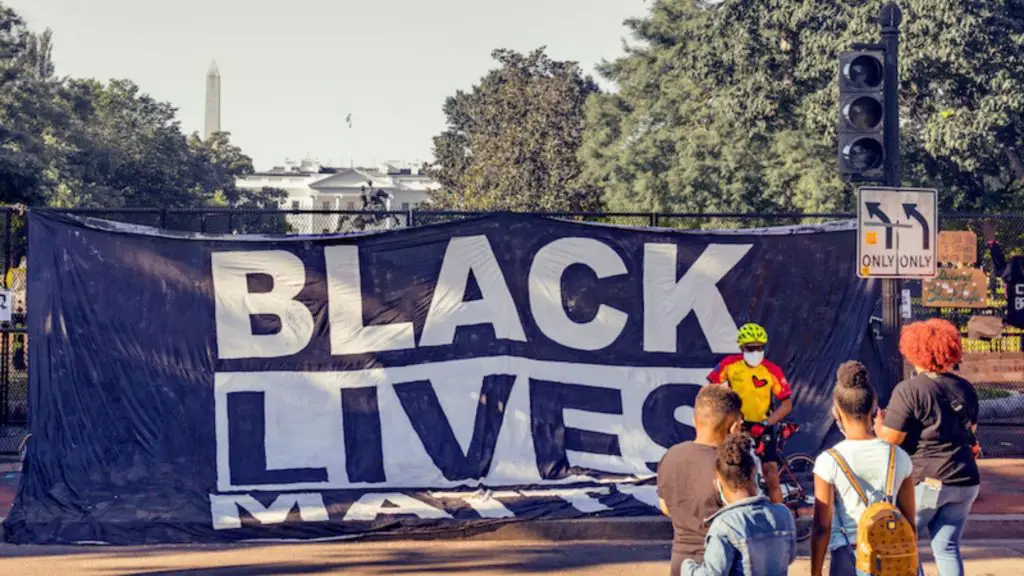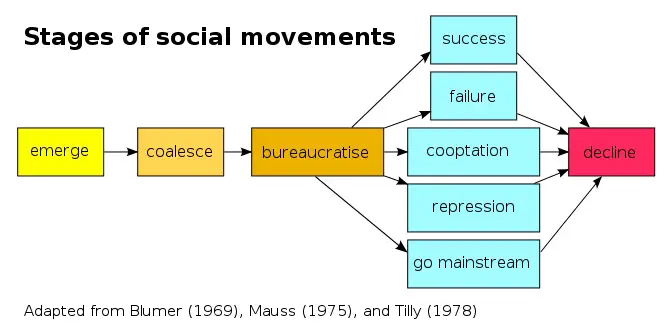Social Change and Current Trends

Changes in social relationships and human interactions bear an impact on cultural patterns and social institutions. No society in the history of mankind has ever remained the way it is.
Current trends now are the result of different factors that lead to social change. One of the most well-known forces that drive social change is collective behavior, which often leads to social movements. This factor reflects the notion that people are not powerless but can shape their society in the direction that they desire their society to be.
Click below to go to the main reviewer:
Table of Contents
- Forms of Collective Behavior (Crowd – Types and Theories)
- Types of Social Movements
- References
- Download Article in PDF Format
- Test Yourself!
Forms of Collective Behavior (Crowd – Types and Theories)
Coined by American sociologist Robert E. Park (1864-1944), collective behavior is an activity that is spontaneous and non-institutionalized where people voluntarily engage in.
Individuals involved are influenced by an impulse, which is a result of social interactions. Groups are loosely organized but most often share a common sense of interest and identity
As it emphasizes groups, collective behavior looks at crowds, fads, panics, fashions, public, as well as reform and social movements that are more organized.
Other collective groups according to John Lofland (1936) are mass and public. The former is composed of many people but is not capable of acting together because they are dispersed and unknown to one another. The latter, on the other hand, is almost like mass, but the point of consensus lies in certain ideas on an issue.
Sociologists Ralph Turner (1919-2014) and Lewis Killian (1919-2010) looked at crowds (people sharing proximity) more closely and identified four types: casual, conventional, expressive, and acting crowds.

People who do not have many interactions but are in the same place at the same time are defined as casual crowds, while conventional crowds are those who come together for a scheduled event. Expressive crowds are like the ones attending funeral services, gathering to communicate their emotions. Riots and protest movements fall under the category of acting crowds, where people have a specific goal to achieve or action to undertake.
There are different theories that explain the phenomenon of collective behavior.
The emergent-norm theory asserts that crowds respond to rather unfamiliar circumstances by developing new norms that deem to be appropriate for that certain situation. Individuals are viewed as neither rational nor impulsive, but as people who are establishing new patterns of behavior, which are reasonable for the state they are in.
Neil Smelser’s (1930-2017) value-added theory leans towards demonstrating how collective behaviors would likely occur. The first condition is called structural conduciveness. This is where people become aware of the problem and are given the opportunity to come together. This will be followed by structural strain (when people’s expectations about a certain situation remain unmet—thus causing strain and tension.) After this, there will spread and growth of a generalized belief once the problem is attributed or identified to a person or group.
Several precipitating factors would then spur a collective behavior. Smelser also added that upon the occurrence of collective behavior, key leaders would emerge to direct these crowds to action. In order to put an end to an episode of collective behavior, social control must be carried out.
Another theory for collective behavior is the contagion theory, which is grounded on the belief that individuals are rational, but this rationality is blurred once they become part of the crowd. Their tendency is to be irrational and emotional, easily swayed by the contagious and hypnotic behaviors of the crowd.
In contrast to this is the convergence theory. Crowds reflect the individuals’ beliefs and emotions. These different individuals converge and find themselves in a crowd having almost a similar stance on a particular issue.
It was in 2003 where flash mobs started to be a trend. This is one example of collective behavior, where people suddenly assemble in a public place to perform for a short period of time. This is generally done for entertainment purposes and the individuals who compose flash mobs will eventually disperse after the performance.
Types of Social Movements
Social movements are a collective behavior but are organized efforts and goal-driven. It can range from local to national and can even reach globally.
Groups that are behind social movements usually want to either create or resist social, political, economic, or cultural change. Most of the societal shifts in history are influenced by social movements.
There are five types of social movements that were identified based on the groups’ motivations and goals that propel their collective behavior.
- Reform movements – these are movements that seek to change a particular thing on the social structure.
- Revolutionary movements – revolutionary is more intense compared with reform movements since this aims to radically and completely change the ways of society.
- Religious/Redemptive movements – the goal of this is to inspire spiritual growth or inner change among individuals. Because of its religious nature, this is often termed as “meaning-seeking” movements.
- Alternative movements – these movements focus on specific changes in individuals’ beliefs and behaviors to reach self-improvement.
- Resistance movements – from the word “resistance”, these are movements that attempt to impede change in society’s structure.
Regardless of the type, social movement emerges whenever there is a dysfunction in the society. People are prompted to begin or join a social movement when they become dissatisfied and felt affronted by this societal dysfunction.
Whenever people feel deprived compared with other groups in the society (relative deprivation), there will always be shared grievances (or shared discontent) and social movements will always be present in society as long as there are members whose needs and interests are not fulfilled. But these movements will only be successful when these people are able to form viable organizations with enough resources and large-scale followings.
Herbert Blumer (1900-1987) and Charles Tilly (1929-2008) gave a four-stage process outline on the lifecycle of social movements.

The preliminary stage happens when individuals reach awareness about a certain issue and key potential leaders are seen. The coalescence stage follows as people organize and come together to publicize the issue. As the movement grows bigger, the organization becomes established in the institutionalization stage and grassroots volunteerism is no longer required because usually there will now be a paid staff. The decline stage occurs once the goal is reached, or the people do not show interest in the issue anymore.
References
Britannica (n.d.). Collective Behavior. Retrieved from https://www.britannica.com/science/ collective-behaviour
Little, W. (2014). Introduction to Sociology – 1st Canadian Edition. Victoria, B.C.: BCcampus. Retrieved from https://opentextbc.ca/i
Lumen (n.d.). Types and Stages of Social Movements. Retrieved from https://courses. lumenlearning.com/alamo-sociology/chapter/reading-types-and-stages-of-social-movements/
Next topic: Social Change and Future Trends
Previous topic: Economy and Work
Return to the main article: The Ultimate Social Science Reviewer
Download Article in PDF Format
Test Yourself!
1. Practice Questions [PDF Download]
2. Answer Key [PDF Download]
Written by Arleia Agustin
Arleia Agustin
A graduate of Bachelor of Arts in Sociology, Arleia Agustin took interest in research and writing during her collegiate years. The time she spent at the University of the Philippines Los Baños taught her the essence of social sciences, to understand the society in each of its facets, and to believe that it could be changed for the better. She loves to read, dream, observe and discover beautiful stories of the people she encounters.
Copyright Notice
All materials contained on this site are protected by the Republic of the Philippines copyright law and may not be reproduced, distributed, transmitted, displayed, published, or broadcast without the prior written permission of filipiknow.net or in the case of third party materials, the owner of that content. You may not alter or remove any trademark, copyright, or other notice from copies of the content. Be warned that we have already reported and helped terminate several websites and YouTube channels for blatantly stealing our content. If you wish to use filipiknow.net content for commercial purposes, such as for content syndication, etc., please contact us at legal(at)filipiknow(dot)net
